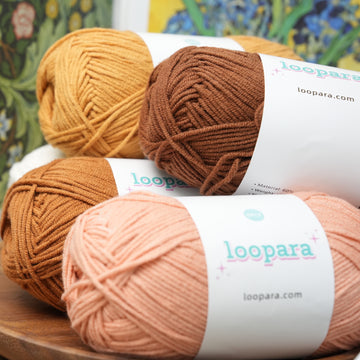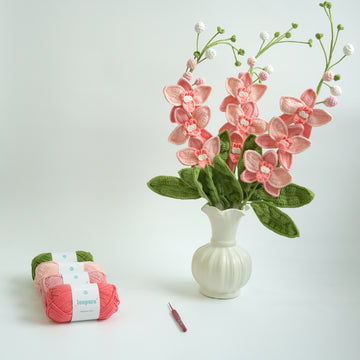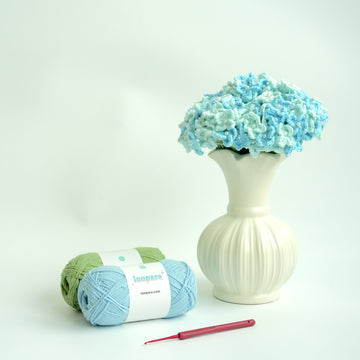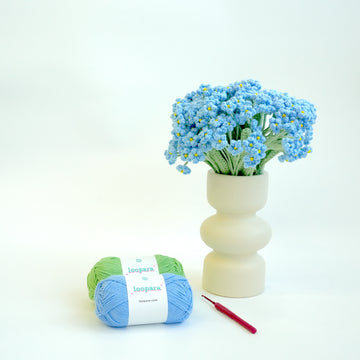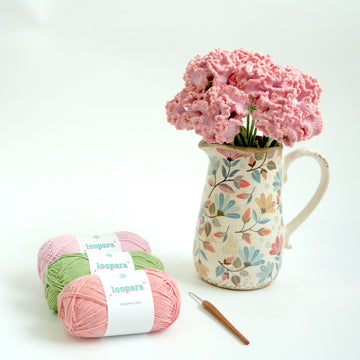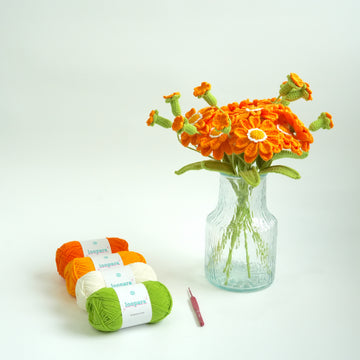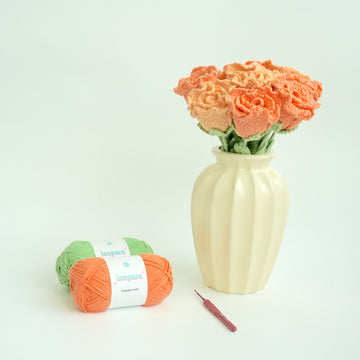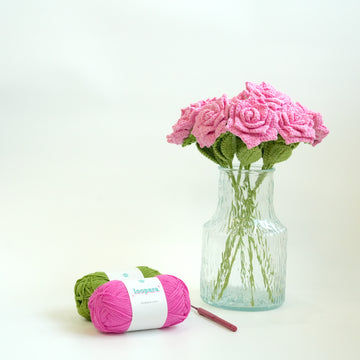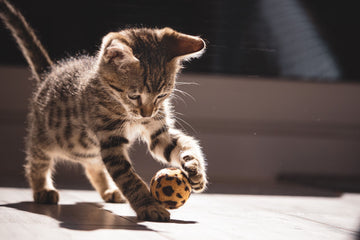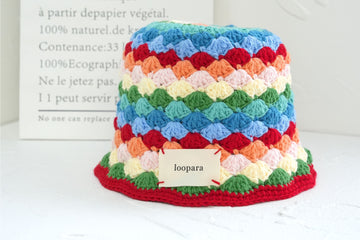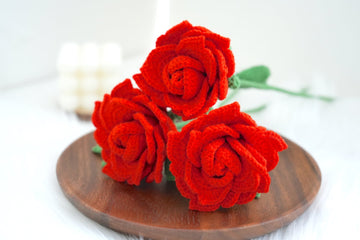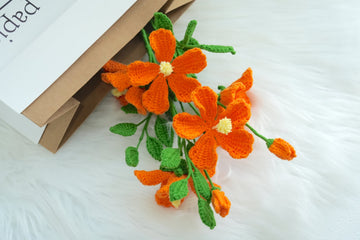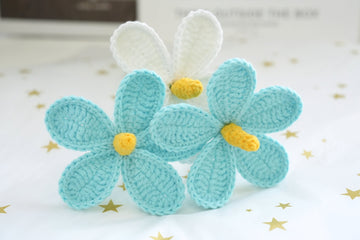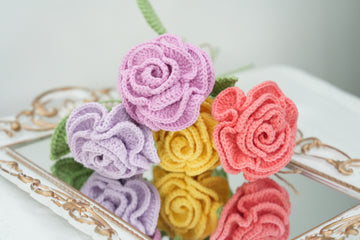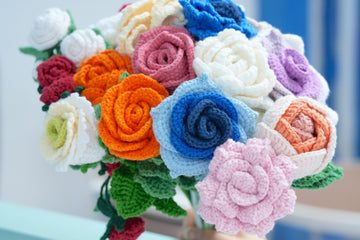Crocheting clothes is a great way to create something unique. And the results make great gifts too. But what is the best yarn for crochet clothes?
The answer to that depends on the type of garment you’re making and the effect you want to achieve. We’re going to explore the different factors to consider. And we’ll look at some different options to consider.
What to consider when choosing yarn for crochet clothes
To select your yarn, start by thinking about the garment you want to make. Different yarns have different properties, and matching them to what you want from your clothing will give you great results.
Here are some questions to consider:
1. Do you want your crochet clothing to keep you warm or cool?
Different fibers have different thermal properties.
2. What sort of drape do you want your crochet clothing to have?
The fiber and weight (i.e. the thickness) of your yarn will affect the way it drapes. If you’re looking for a flowing silhouette, choose a lighter weight yarn with smooth fibers. For a more structured piece, thicker yarn will hold its shape better.
3. What sort of texture do you want your crochet clothing to have?
Yarns with smooth fibers, like cotton, create fabrics where each stitch is clearly defined. Others, like mohair, will give a fluffier texture.
4. How do you want to launder your crochet clothes?
Some fibers need special treatment – wool and silk, for example, need a cool wash and specialist detergent. And while acrylic is often labeled “easy care”, it should still be kept away from tumble driers.
5. How much time do you have to crochet your garment?
The weight of your yarn will affect how fast it works up into fabric. If you’re on a deadline, a thicker yarn will get the job done quicker.
6. What is your budget?
Different yarns have different price tags. As a rule, natural fibers are more expensive than synthetic ones. Calculating how much yarn you’ll need before get started means you can choose an option to suit your budget.
7. Are you concerned about the environmental impact of your choice of yarn?
The textiles industry is a major contributor to environmental damage, having a huge impact on water resources and land use. Recycling used yarn or buying yarns that have been sustainably produced is kinder for the planet.
Best yarn for crocheting summer clothes

When the sun’s out, you want lightweight garments that will help you keep cool.
Best yarn weight for summer clothes
A thin yarn will usually work best for summer clothes, as it won’t trap so much warm air next to your skin. Yarn weights are graded in eight categories, from 0 to 7. Yarns weighted 0 are the thinnest, while those graded 7 are “jumbo” sized.
Very thin yarns can be tricky to work with, and it will take you longer to work up your garment. Yarns weighted 2 or 3 are a good option or summer. But it will take a while to crochet your fabric.
One option is to use a heavier weight yarn, say 3 or 4, with a larger hook and an open pattern. That will work up quicker, and will give you a fabric with plenty of holes to let the air flow freely.
Also Read: Yarn Weight Chart & Size Guide
Best yarn fiber for summer clothes
When it comes to summer clothes, natural yarns win every time. That’s because they breathe in a way that synthetic yarns don’t. Here are some options to consider.
1. Cotton

Cotton is always a favorite for summer clothes because it’s lightweight and breathable. And the same goes for cotton yarn used for crochet.
It’s available in a range of different thicknesses and colors. And if you want to dye your own yarn, mercerized cotton will hold its color particularly well.
It’s easy to launder too. And depending on the type of dye, it can cope with being machine washed at higher temperatures.
Cotton yarn is a little stiffer than some other fibers, but it’s still fairly easy to work with. And cotton garments will get softer the more they’re washed.
Cotton yarn produces a fabric with good stitch definition. Choose a stitch that isn’t too tight, and it will drape well too.
But although it’s a natural fiber, the environmental credentials of cotton aren’t the best. That’s because it’s a crop that needs a lot of water to grow. And it also needs warmer temperatures that mean it’s often grown in places where water is scarce.
If you like the idea of using cotton but want a more environmentally sustainable choice, go organic. Yarns with the GOTS (Global Organic Textiles Standard) label have been produced without the use of pesticides.
2. Linen
Linen shares many of the properties that make cotton such a great fiber for summer crochet clothes.
It’s naturally cool and will wick away moisture from the skin too. It’s also strong and durable, with antibacterial properties.
It can generally be put into the washing machine, though some linen blends may need more delicate treatment. Check the label on the yarn.
Like cotton, linen yarn can be a little stiff. But the finished item will soften up every time it goes into the wash.
Because it requires less water to produce than cotton, linen’s environmental impact is less. Note though, that growers may still use large quantities of environmentally damaging pesticides. Choose a linen certified by GOTS for a more sustainable option.
3. Silk
Silk yarn is a timeless classic, and its temperature regulating properties means it can be used for both summer and winter clothing.
If you use silk yarn, choose a stitch that will show off the drape of the silk. Open, lacier designs work well.
There are some downsides to be aware of, though. Silk isn’t very elastic, and any inconsistencies in your crocheting tension will show in the finished fabric. It isn’t the best choice for colorwork for the same reason – any gaps between the yarns will be clearly visible.
And it’s expensive too. Harvesting silk yarn from second-hand crocheted or knitted items can be a cost-effective option, as well as an environmentally friendly one.
Best yarn for crocheting winter clothes
When the mercury dips, you want clothes that will keep you warm. And chunkier crocheted fabrics in warmer yarns will do just that.
Best yarn weight for winter clothes

When it comes to choosing yarn for winter clothes, go chunky! Thicker yarns will not only give you a thicker fabric to keep those chill winds at bay, they’ll also work up faster.
Yarns weighted 5 or 6 (known as “bulky” or “super-bulky”) are a good option. If you want a dramatic look, a yarn weighted 7 (jumbo) can work well too.
It’s usually recommended to use a thicker hook with a heavier yarn. If you want to, though, you can experiment with slightly smaller hooks to create a denser fabric. Just remember that the tighter your stitches, the less drape your fabric will have.
Best yarn fiber for winter clothes
When you’re crocheting clothing for the winter months, you want fibers that can trap the heat. Here are some candidates for your shortlist.
1. Wool
Wool is a great choice for winter clothing. It’s an excellent insulator. And because it’s also good at wicking away moisture, your wool sweater won’t leave you hot and sweaty.
The accepted wisdom is that wool can’t be machine washed – but that’s not quite true. You may need to hand wash particularly delicate fibers. But most wools will be fine in the washing machine on a wool setting and with a specialist wool detergent.
Wool garments shouldn’t be put into the tumble drier though. The wool will felt in the high temperatures.
A small number of people are allergic to lanolin, the oil in wool. So if you’re planning to use wool to make a garment as a gift, check the recipient doesn’t have an allergy first.
2. Silk
Silk is often thought of as a summer fabric, but in fact, it’s just as good for the winter months. Choosing a pattern with closer stitches will maximize its insulating properties. But it will mean you won’t get such a good drape from your expensive yarn.
Silk yarn needs care. It will require the silk or delicates setting on your washing machine, together with specialist detergent. Washing it by hand is a safer bet.
3. Acrylic
Acrylic is a popular choice for crocheting winter clothing. It’s warm (if not quite as warm as wool), inexpensive, and available in a wide choice of weights and colors.
It can also go into the washing machine on a hotter wash without being damaged. Just don’t tumble dry it. The higher temperatures will melt the fibers, giving you a floppy, shiny garment.
The main downside of acrylic is its environmental impact. It’s made from fossil fuels and requires toxic dyes to color it. And when you wash an acrylic garment, it will leach microplastics – harmful to human health and the environment – into the water supply.
Summary: Best yarn for crochet clothes
The best yarn for crochet clothes depends on what type of garment you’re making. Think about when and how it will be worn, how you’ll wash it, and how much you want to spend on yarn.
Cotton and linen yarns are good options for lightweight summer clothing. For the winter months, wool and acrylic are popular choices. And though expensive, silk can work well at any time of the year.


